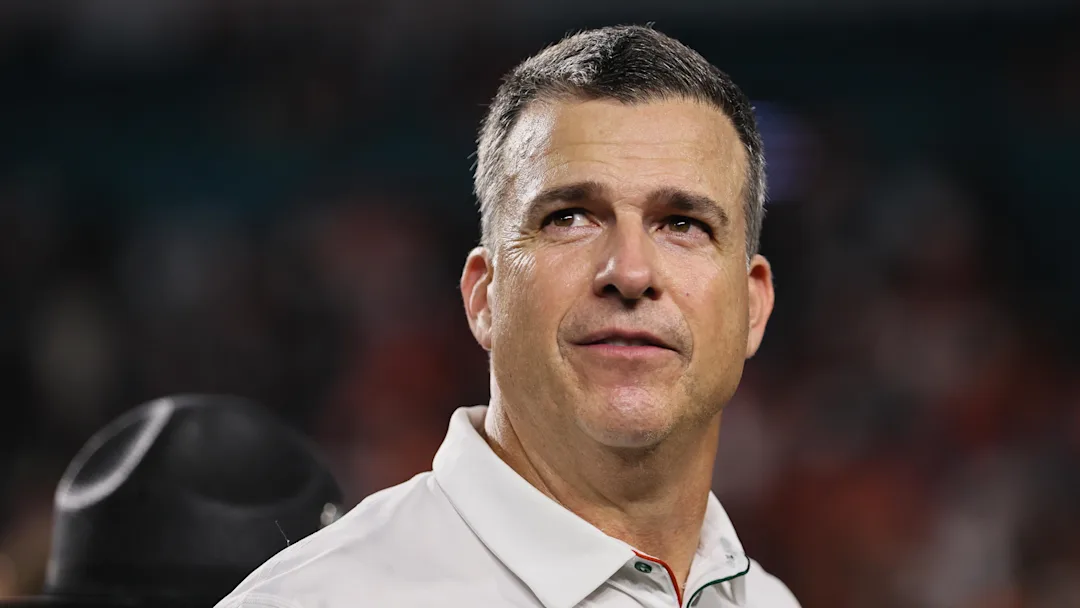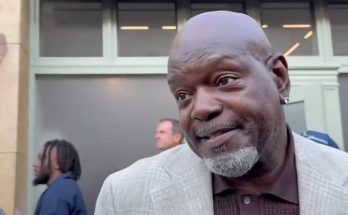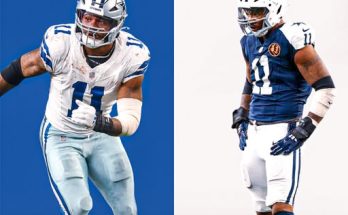Florida State’s ambitious offseason took a major hit this week when one of the most sought-after players in the transfer portal announced his commitment to rival Miami. In a move that sent shockwaves throughout the ACC and beyond, the Hurricanes landed the Seminoles’ top target, dealing a blow to FSU’s roster hopes and igniting even more fire in one of college football’s fiercest rivalries.
The player in question, a high-profile wide receiver who had drawn interest from multiple top programs across the country, had been a top priority for Mike Norvell and his staff. With significant losses at the receiver position following the departure of several key contributors either to the NFL Draft or the transfer portal, Florida State made it a mission to land a proven playmaker who could step in and immediately impact the 2025 season. The Seminoles put considerable resources into recruiting the receiver, including multiple visits, extensive film sessions, and personal attention from offensive coordinator Alex Atkins and wide receivers coach Ron Dugans.
There was a growing sense of optimism around Tallahassee that FSU was close to sealing the deal. The transfer target had reportedly built strong relationships with the coaching staff, connected with quarterback Brock Glenn during an unofficial visit, and left his final trip to FSU impressed by the team’s vision and trajectory. Insiders believed the Seminoles had edged ahead of Miami in the final stretch, especially given their recent on-field success and their clear need for a go-to target in the passing game.
But in the end, relationships and needs weren’t enough to close the deal. The Hurricanes, led by Mario Cristobal, made a late, aggressive push that ultimately turned the tide. Miami’s pitch reportedly centered on the opportunity to be the centerpiece of a revamped offense, significant NIL backing, and the promise of playing in a big-market city with national visibility. That combination proved irresistible, and the receiver made his decision public with a social media post donning the orange and green.
For Florida State, the decision stings for more than just football reasons. Losing any top recruit to a conference rival is difficult, but losing to Miami—especially for a player the staff had targeted for months—brings an extra layer of frustration. The Hurricanes not only secured a top-tier player who fills a position of need, but they also scored a symbolic win on the recruiting trail that could have longer-term implications. Recruits and transfers watch these battles closely, and wins like this help a program like Miami build momentum and perception among top talent.
The Seminoles must now regroup and recalibrate their strategy. The transfer portal is still open, and Norvell and his staff have shown in recent years that they are among the best in the country when it comes to identifying and developing portal talent. The additions of Jermaine Johnson, Keon Coleman, and Jared Verse in previous cycles proved that FSU knows how to turn transfers into stars. But this cycle’s wide receiver market has been unusually thin at the top, and the loss of their top target means Florida State is back to square one in its pursuit of a game-changing outside threat.
There’s also the issue of momentum. After a 2024 season in which the Seminoles narrowly missed the College Football Playoff, expectations were high for a reloaded roster to make another run. The team retained several key defensive pieces and landed a few promising additions in the portal, but questions linger on the offensive side of the ball, especially at receiver and offensive line. The failure to close on this particular transfer only intensifies those concerns and adds pressure to hit on remaining targets.
Internally, the loss could also affect morale, though Florida State has tried to emphasize a “next man up” mentality. Players have taken to social media to show unity and support for the staff, while coaches have reportedly told insiders they remain confident in their recruiting approach and long-term vision. Still, there’s no denying that missing out on a top target after months of effort leaves a mark.
For Miami, the win is a validation of sorts for Cristobal’s process. After several cycles of criticism for uneven offensive performance and inconsistent quarterback play, the Hurricanes are trying to rebrand themselves as an elite destination for offensive skill talent. Landing a transfer of this magnitude gives the staff a high-profile win they can point to when selling their future vision. It also addresses a major area of concern for Miami, which, like Florida State, lost multiple receivers this offseason and needed an experienced player to anchor the group.
While the rivalry between FSU and Miami has seen its ups and downs over the decades, the battle off the field has become just as intense as the one on it. The rise of the transfer portal and NIL has added new layers to recruiting, with battles now fought not just on facilities and tradition, but on financial packages, marketability, and immediate playing time. In that regard, Miami outmaneuvered FSU this time around, using every tool at its disposal to secure a win.
This development is also a wake-up call for Florida State’s NIL operation, which has improved but still faces skepticism compared to other elite programs. The program’s collective has made strides, but in high-profile cases like this, every detail matters—from structure and sustainability to transparency and player trust. If NIL played a meaningful role in the transfer’s decision, then it underscores an area where Florida State must continue to evolve to compete at the highest level.
Looking forward, the Seminoles still have several options. Other wideouts are expected to enter the portal as the spring semester winds down and rosters across the country shake out. There may be hidden gems still available—players who don’t have the same star power but bring speed, reliability, or schematic fit. FSU has proven capable of finding talent others overlook, and that ability may be tested more than ever in the coming weeks.
There’s also the possibility that younger players already on the roster step up in bigger roles. Mike Norvell has long emphasized player development, and the staff may shift some focus toward bringing along freshmen or redshirt sophomores who’ve shown promise in practice but have yet to break out. It’s not ideal when a program has to rely on in-house solutions after a high-profile miss, but it can also spark unexpected growth and leadership.
In the broader picture, this episode is just another chapter in the ever-evolving dynamics of college football. The lines between recruiting, development, and roster management continue to blur, and the programs that adapt fastest will be the ones best positioned for success. Florida State missed out on a player it badly wanted, but the season is still months away, and the story of the 2025 Seminoles is far from written.
The challenge now is how they respond. Can Norvell rally the troops, identify new targets, and use this as fuel rather than a setback? Can Florida State’s leaders ensure the program stays competitive in the NIL space and continues to sell its upward trajectory? Can the team develop from within and stay the course toward a playoff-caliber season?
Only time will tell. For now, though, the Hurricanes have reason to celebrate—and the Seminoles, once again, have work to do.



